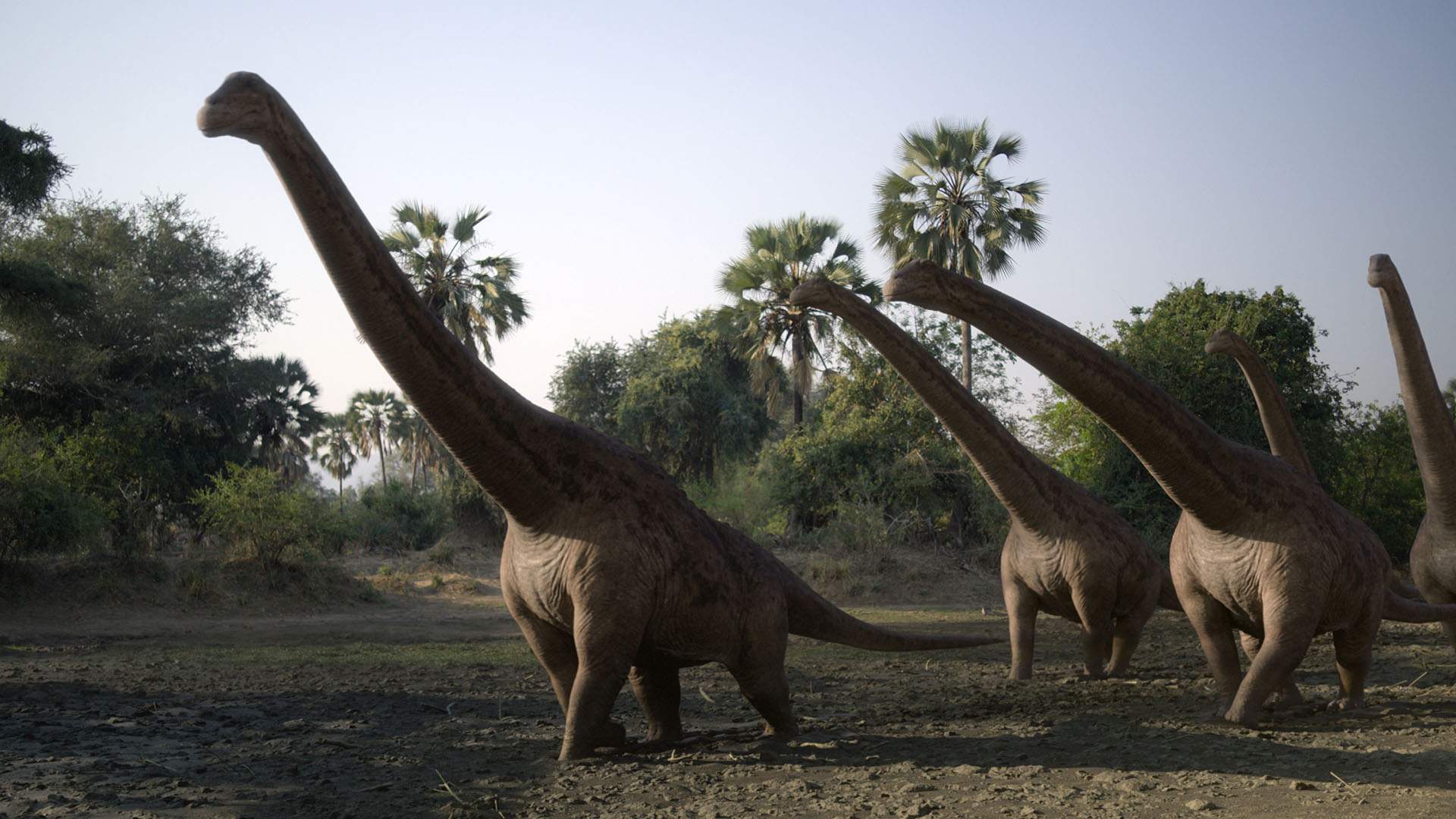How to Bring Dinosaurs to Life in a David Attenborough Documentary with the 'Prehistoric Planet' Team
Executive producer Mike Gunton and series producer Tim Walker tell us all about Apple TV+'s stunning series, which is back for its second season.
Dinosaurs. Sir David Attenborough. This planet we call home, but 66 million years ago. That's the Prehistoric Planet template, and it's a winner. It proved a treat when Apple TV+'s impressive and immersive documentary series initially arrived in 2022, becoming one of the best new shows of the year. And, now that the program is back for a second five-episode run with more photorealistic ancient creatures and more Attenborough-narrated insights into their behaviour — streaming one chapter per night between Monday, May 22–Friday, May 26, then available to watch whenever viewers like afterwards — that formula works just as charmingly again.
Prehistoric Planet achieves a magical feat, which both seasons have perfected: making viewers feel like they're travelling back in time, and spectacularly so. The concept for the program is over a decade old, coming to executive producer, veteran Attenborough colleague and BBC Natural History Unit Creative Director Mike Gunton (Planet Earth II) while filming with the iconic broadcaster in Africa, but the end result unsurprisingly took time to come to fruition.
"We did a very early test — actually, in fact it became the heart of the T-rex on the beach sequence in the opening series. We did that as a sort of initial proof of concept and it was it was astonishing, actually, how good it was," Gunton tells Concrete Playground in a chat about the show with series producer Tim Walker.
Being able to capitalise upon advancements in technology to make Prehistoric Planet look as stunningly lifelike as it does is a happy result of the years spent making the show happen; however, if was it's presenting wasn't scientifically sound, all that imagery would mean nothing.
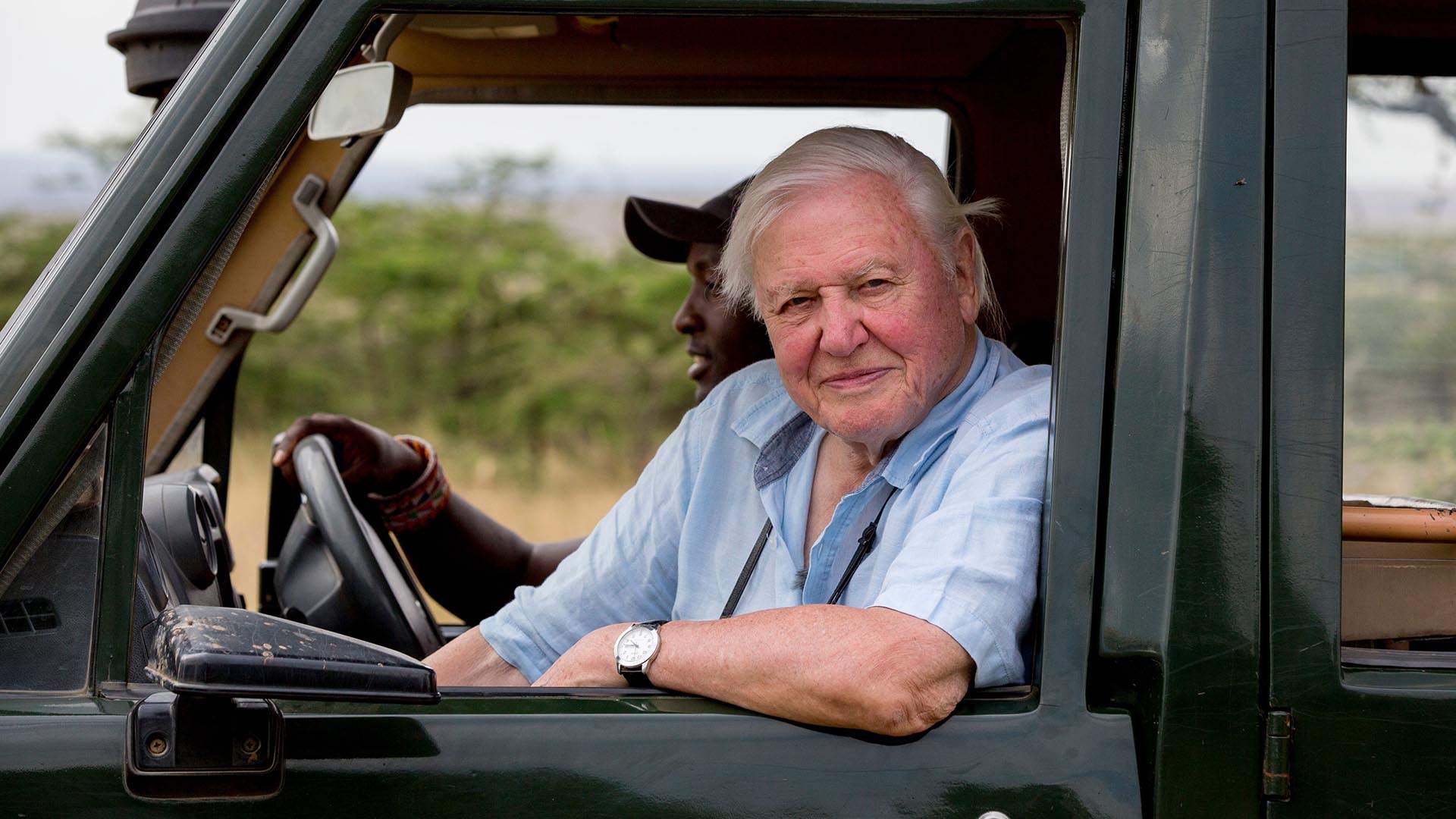
David Attenborough, A Life on Our Planet, WWF
"We're very proud of the scientific rigour that underpins the series," adds Walker, who has also enjoyed a lengthy history delving into natural history on-screen, including on Attenborough projects such as David Attenborough's First Life. "Every sequence — when we talk about sequence, we're talking the short films within the film, so each episode has about five or six sequences in it — each of those sequences takes years to create, both in the research and then in the execution of it."
That effort is evident, whether Prehistoric Planet is observing raptors display their cleverness, peering at mating rituals — oh-so-many mating rituals — or unpacking the often-perilous search for food and always-dangerous quest for survival. It shines through as the series surveys all the regular go-to dinosaurs, when it broadens its remit to lesser-known creatures and as it heroes non-dinosaur inhabitants of this pale blue dot during the Cretaceous age.
How did it all come about? How does it look so astonishing? How important is the one and only Attenborough to making the series what it is? Gunton and Walker chatted with us about all those crucial Prehistoric Planet details and more — including the tense experience of watching Attenborough watch the show's first footage.

ON HOW PREHISTORIC PLANET INITIALLY CAME OUT — AND WHY IT DIDN'T EARLIER
Mike: "That's often the sign of a good idea, I think. Of course it should've have been done — it's blindingly obvious when you think about it. The idea came about actually with Sir David, doing some filming with him in Africa about 12 years ago now, maybe even more. He was doing the opening for a series I was working with him on about Africa, and his opening piece of camera was on top of this mountain on the equator in Africa.
He was saying, the kind of thought was: 'nowhere on earth does nature put on the greatest show than here in Africa'. And I thought 'that's interesting — it is true, but I wonder if that's always been the case? I wonder when the greatest time of all time would have been?'.
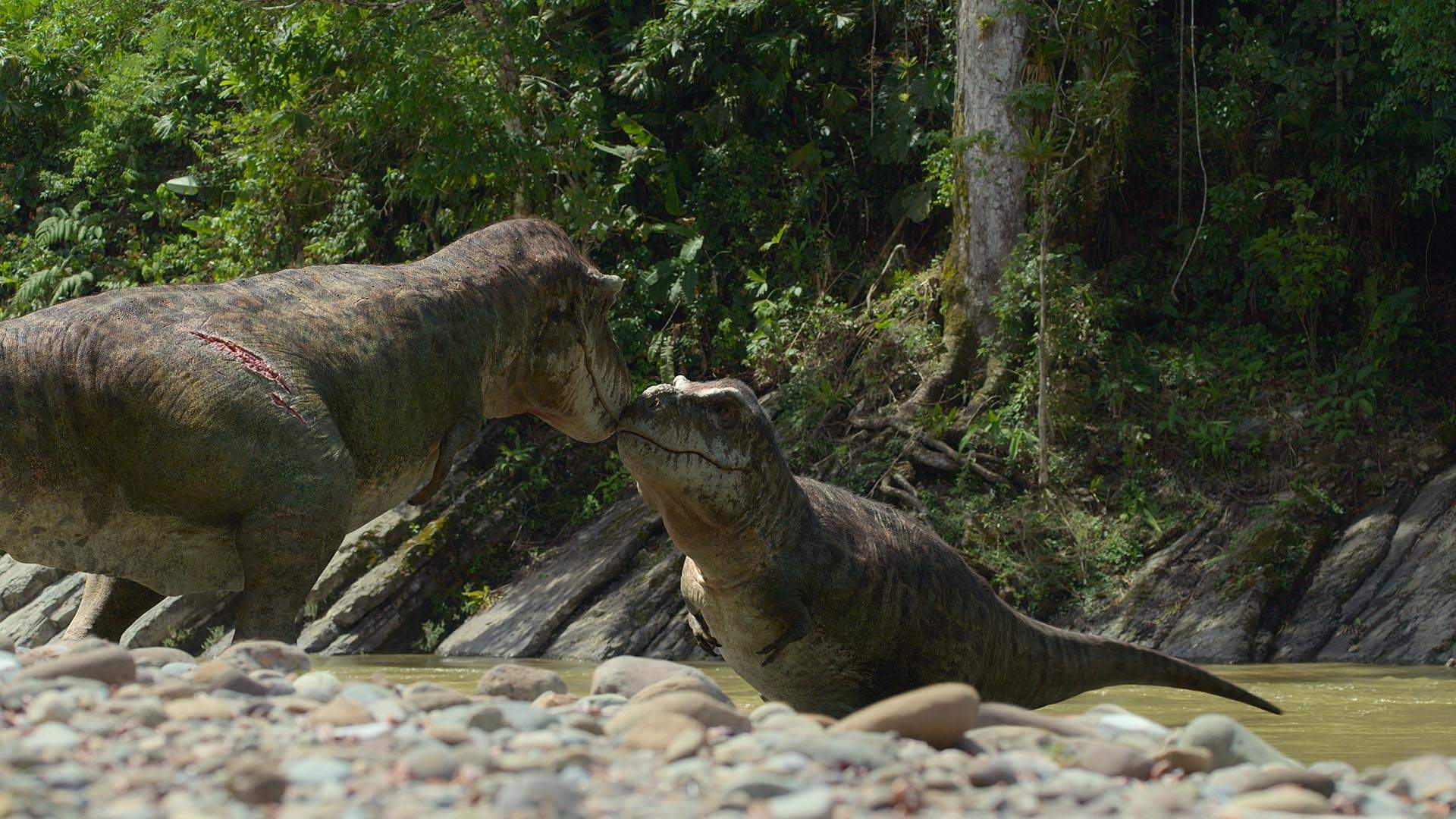
And I thought it was probably when the dinosaurs were running around here. So I thought 'could you do that?'. Could you take that crew that was standing on that mountainside, stick them in the time machine, fly them back 66 million years ago, and Sir David, and make a film, a series, as we were trying to do there, but instead of being lions and wildebeests and elephants, there'd be T-rex and triceratops.
So that was the that was the germ of the idea, but it took a long time, many years, to get every all the stars to align — the planets to align, whichever the way you want to say it — and to get the team together, to get the resources and to find the right broadcaster before we finally made it.
But actually, as David has said — he said 'I'm glad we waited ten years, because actually we've learned so much in those ten years'. And he's probably right. As Tim says, this is a golden age of dinosaur research now."

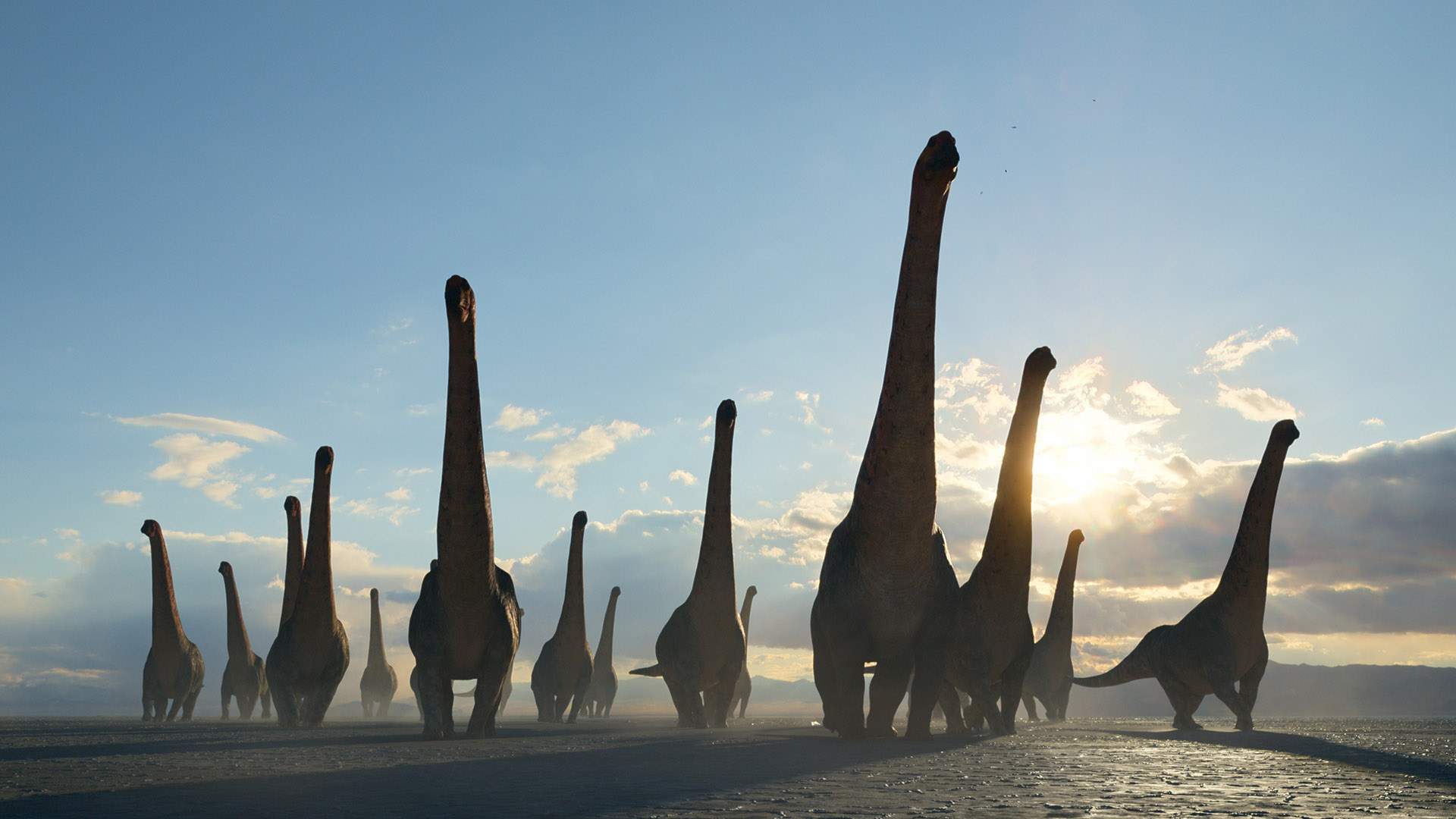
ON MAKING THE SERIES LOOK SO STUNNINGLY PHOTOREALISTIC — AND THE HUGE TEAM EFFORT BEHIND IT
Mike: "I think definitely the technology does improve all the time, but again another another sort of star alignment that I think was critical was that Jon — Jon Favreau — had in that time made The Jungle Book, then The Lion King. They basically did millions of dollars in R&D for us really, because to make those shows, Jon wanted to do that effectively — he said he wanted to try to take some of the grammar and approaches from wildlife documentary-making and apply those to those shows in terms of the look and some of the way the camera worked.
And and that hyper-accelerated the sorts of CG that we needed to make to make this show. But it's accelerating — these these advances are going all the time."
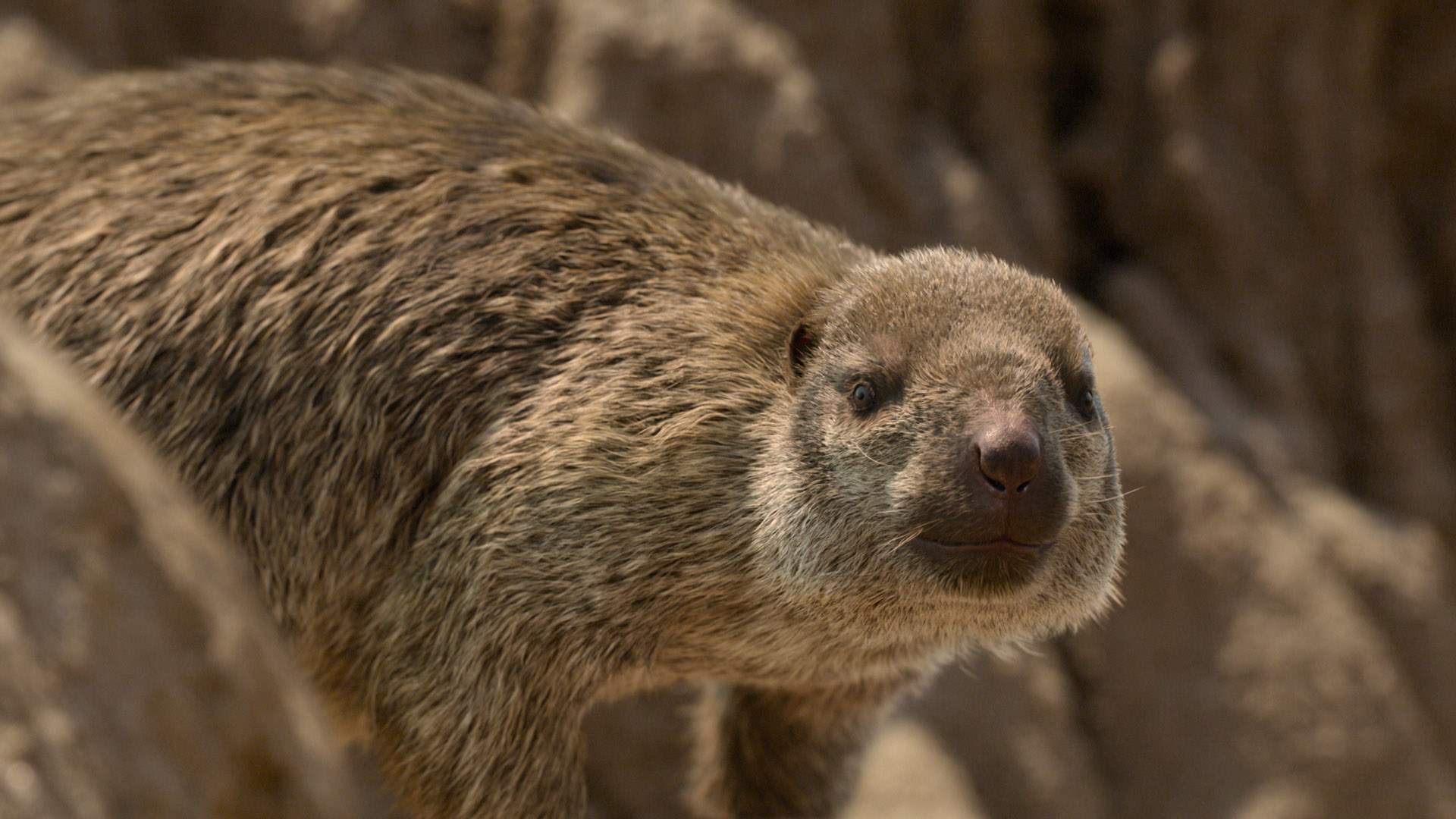
Tim: "[It takes] lots and lots and lots and lots of hard work. That's the basic answer. We are a multidisciplinary group of people. We've got, over the course of the the two series, we've approached almost 2000 people working on the project in various different disciplines. Marry them all together and you get a piece of work which is greater than the sum of its parts.
We've got fabulous wildlife filmmakers based at the BBC's Natural History Unit, who've spent years in the field filming animals, making animal films. And then we've got wonderful CGI artists at MPC, who were the FX producers. And then we've got a wonderful relationship with the palaeontology world.
So we have a lead scientific adviser who's embedded in the team. He's got his finger on the paleo pulse, and through that connection we talk to people all over the world. And of course, the internet has enabled that to happen really, really quickly — the exchange of data to happen really quickly.
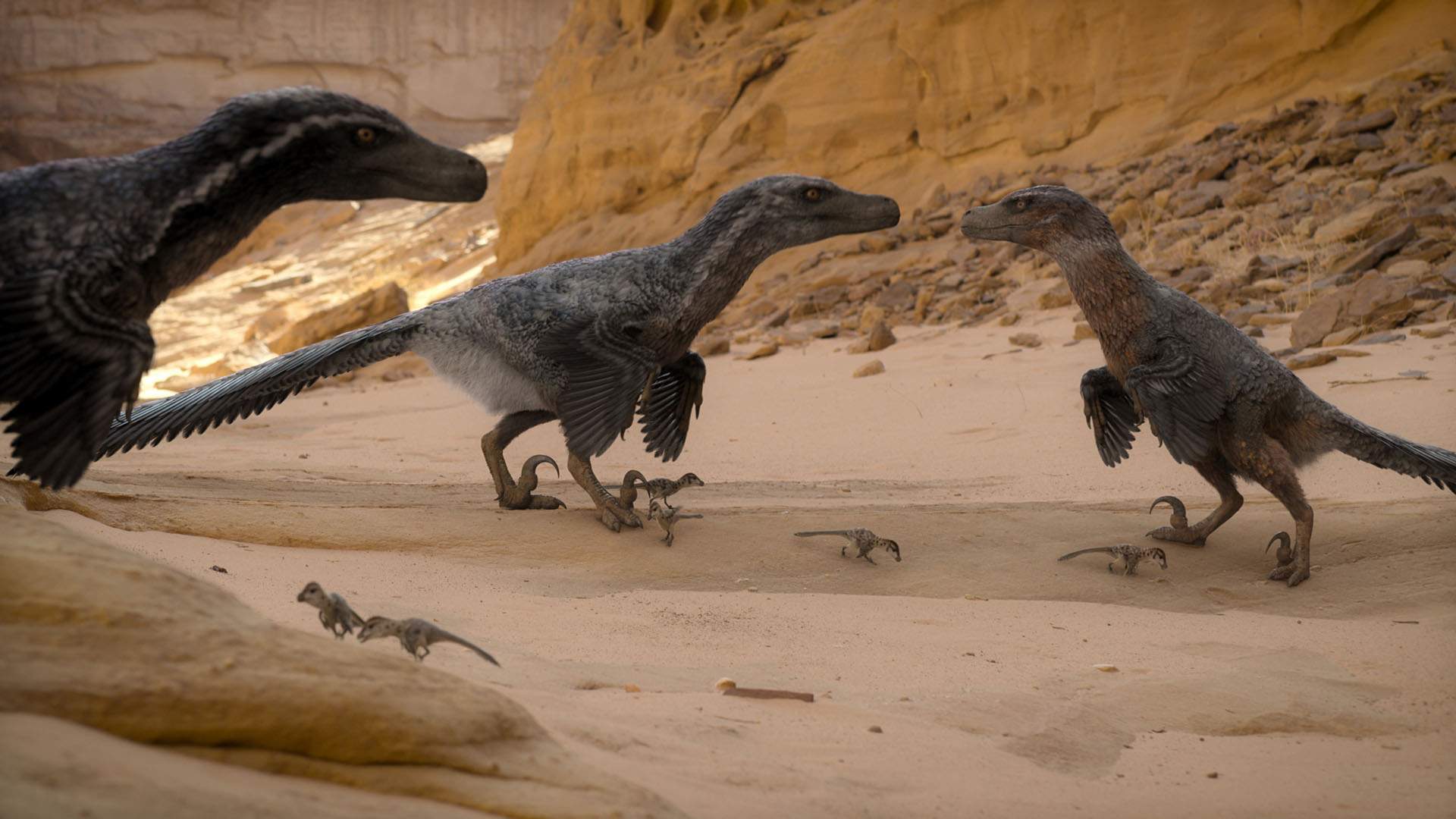
So marry all of those disciplines together, as in paleoclimatologists, paleobotanists, locomotion specialists, paleo artists, and you start to create this wonderful machine that starts thinking about what we're going to put in the series by looking at the fossil record so. That's our base entry level.
We look to see what animals were around in the time period. Our time period that we feature is only the last five or six million years of the dinosaur evolution, called the Maastrichtian. And so we look to see what's in the Maastrichtian fossil layer. That gives us the animals — not just the dinosaurs, but the whole cast of characters. So the dinosaurs, the pterosaurs in the air, and the marine reptiles. And then the other animals that were around as well, because it was a very rich and vibrant time —so the mammals, the snakes, the amphibians, the other reptiles, the fish, the birds — to paint this very rich habitat of the of the planet.
Then we start with that fossil record — that gives us the animals, it gives us the habitats — and then we start to think about the storylines based on what we know the behaviours would have been like. Animals face the same challenges to survive their daily rigours whether it's today or 66 million years ago. They've all got to find a mate. They've all got to procreate. They've all got to find food. They've all got to avoid being eaten in some cases. So that happens in Australia today, Africa today, America today. It happened in those places 66 million years ago. And so combining all of those different skills with the different personnel, that's how we start to get the series."
Mike: "That's the that's the short answer, by the way."

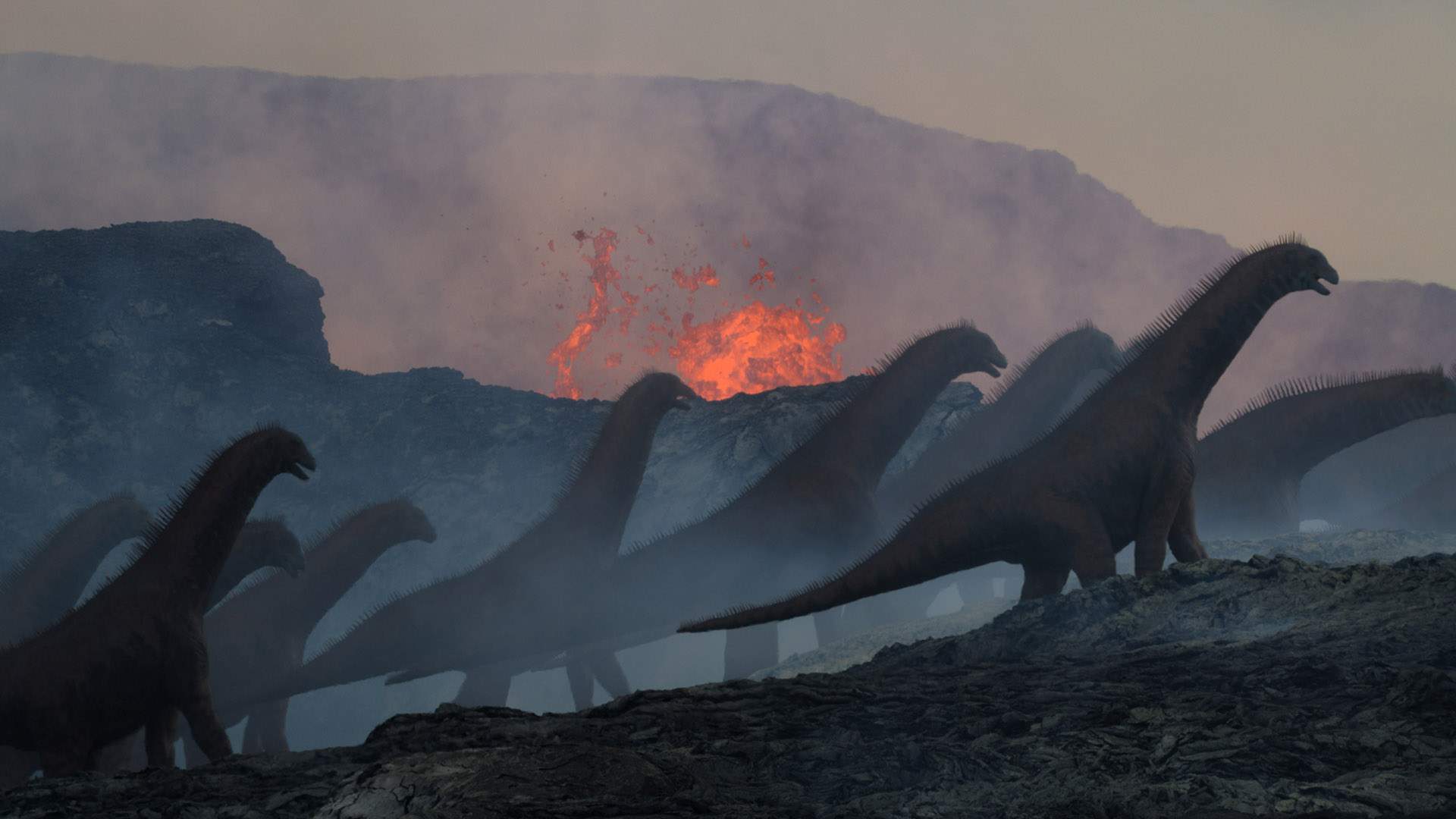
ON DAVID ATTENBOROUGH'S IMPORTANCE TO THE SERIES
Tim: "One of the things that we all are very proud of is the incredible execution, not just of the CGI imagery, but also the aesthetic of the whole series. It's beautifully filmed, beautifully put together. But we always maintain that it doesn't matter how good something looks, it's all about the storytelling. And if you don't have the storytelling, the images may wash over you a little bit.
So then to add the gravitas of the storytelling, we have a wonderful opportunity to work with Sir David. And Mike has worked with David for what, 35 years, Mike is it?"
Mike: "Nearly, yeah."
Tim: "And if anyone can tell you a story about Sir David it's Mike."
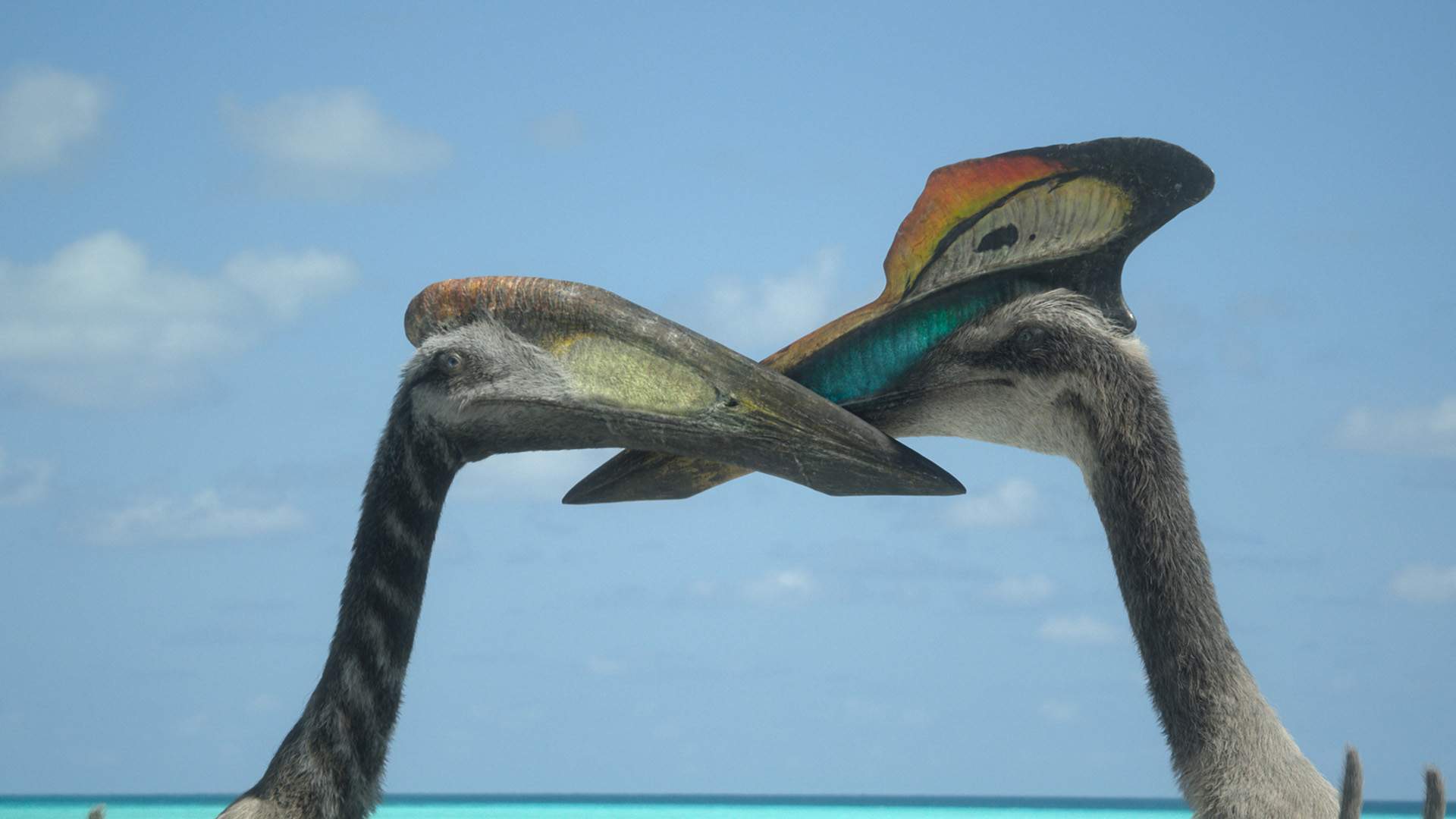
Mike: "One thing that was interesting about working with David on this was that he did — actually, with one of the questions you asked earlier about why hasn't it been done before, I think he was always quite anxious that he'd seen people making dinosaur shows, and he always thought were a bit fantastical and a bit lacking in rigour. And so one of the things that he was very, very keen to interrogate was the level of rigour and the authenticity that we were bringing to the show. Not just how good the dinosaurs look, but how much evidence we were using to come up with our deductions and the representations we made.
In the end, I literally had to go there to his house with two sequences to show him in story form, in sort of a storyboard form, and to explain what we're doing and how the stories will play out. And I thought 'I'll take some of the data that we've got, that we've collected, to support these two stories'. And each of those was a carrier bag, a holdall full of papers. I had to hump two massive great holdalls of paperwork up to London to talk to him about it.
And sure enough, he wanted to see them. We flipped through some. So it needed that kind conviction for him to want to do it, because if he's going to do it — this is the one time he's going to do it, probably — he wanted to make sure it's going to be to the best and the most authentic and most rigorous representation you could ever have."

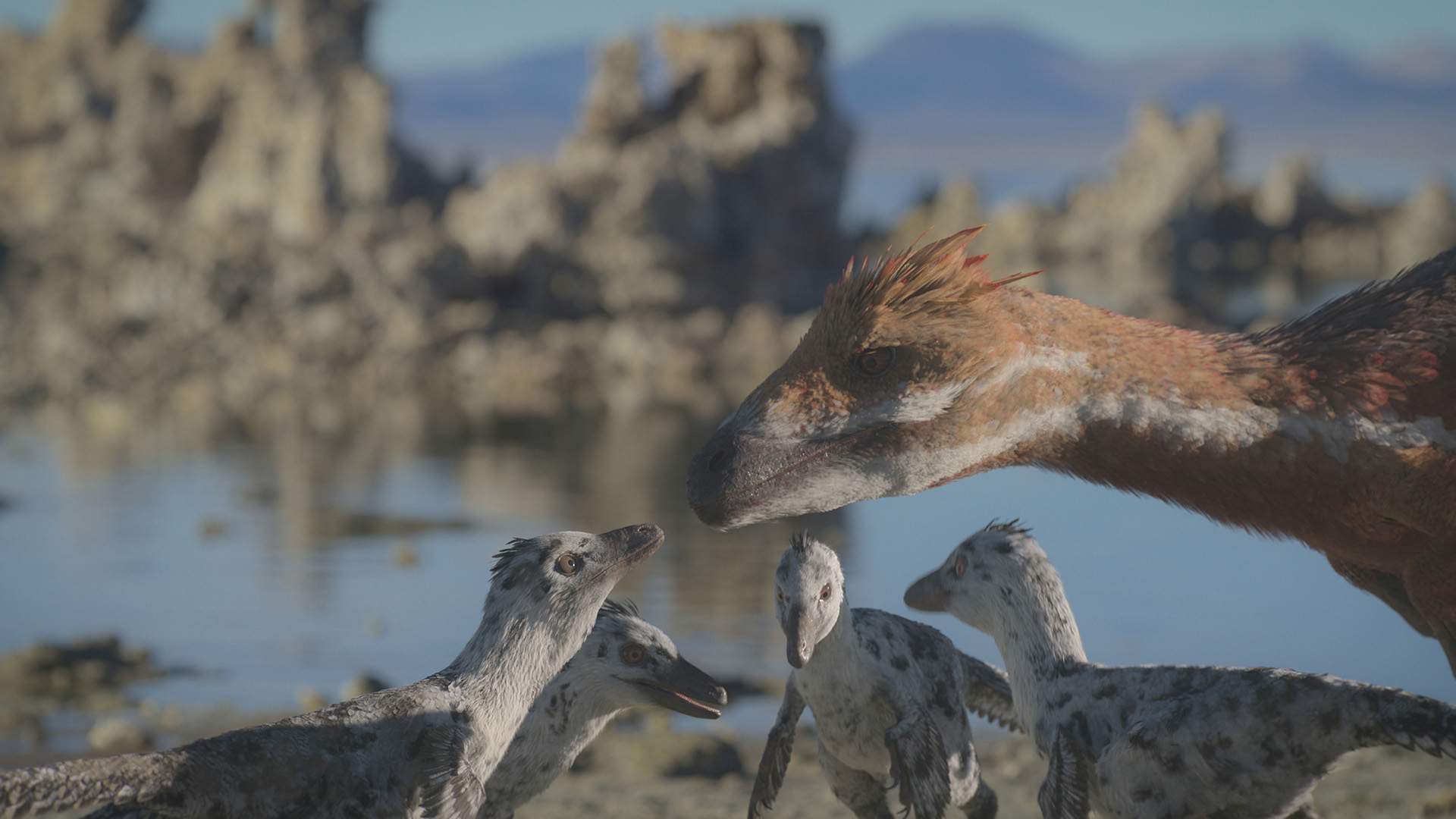
ON DAVID ATTENBOROUGH'S REACTION TO SEEING THE FINISHED PRODUCT
Mike: "When we finally showed him the first episode, we again went up there to show it. He had it on my computer, and he sat and he said 'let's watch it then'. And he sat down, he sat there — not a word, he watched it without a word, and his fingers were slightly drumming on his the arm of his chair as he was watching. He was very intensely watching it. He finished it — he's very theatrical in this way, he flipped the computer down, and then [he says] 'but I don't know how you could have done it any better'.
And from that moment on he was utterly — every commentary recording, he'd say 'when's the next one? That was amazing. What's happening? I can't wait to see the next one. What are we doing next?'.
Really, really, it was a great, great pleasure, wasn't it Tim?"
Tim: "It really was."
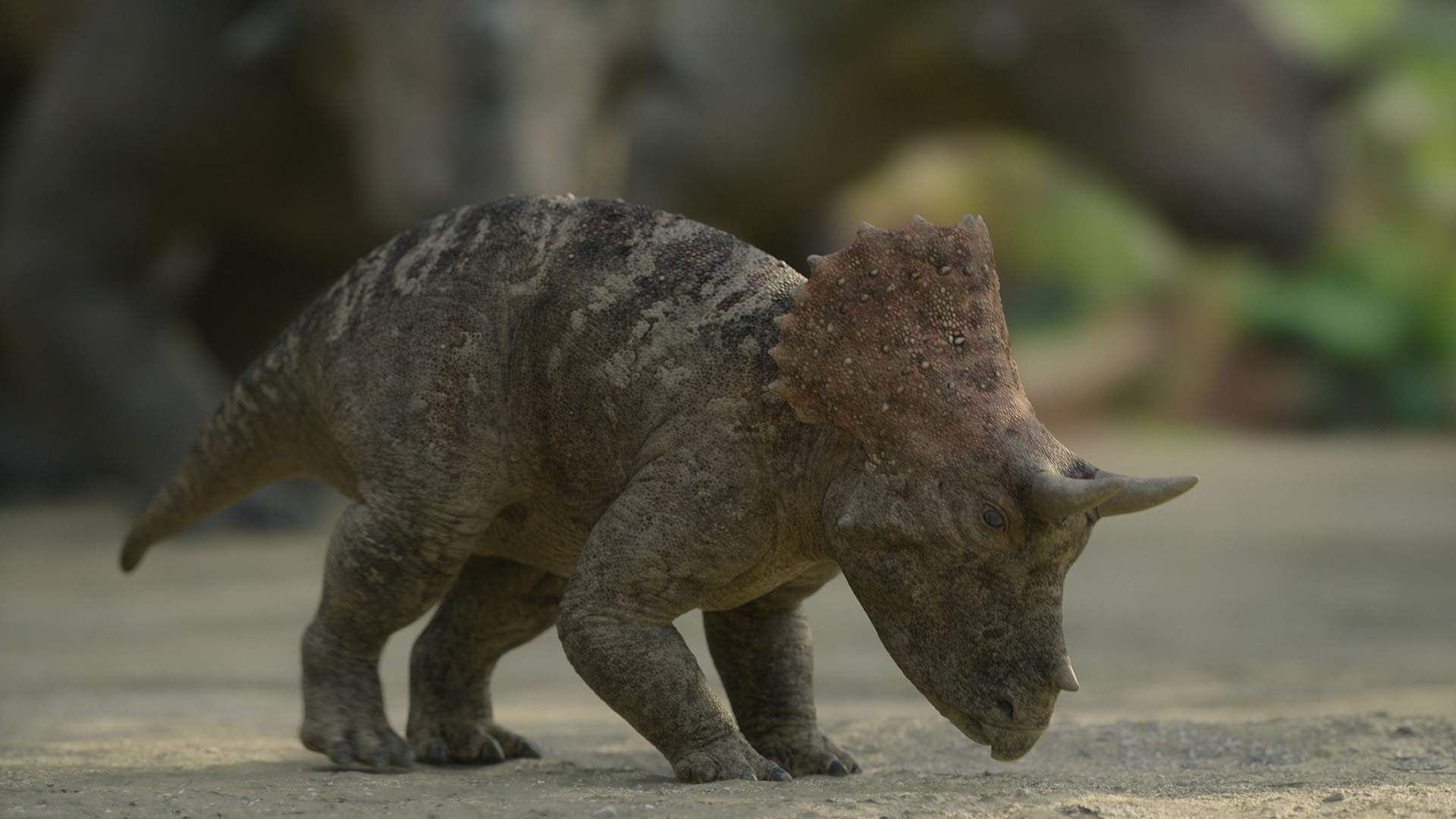
Mike: And those PPUs — those little behind-the-scenes ones at the end — that's David at his absolute most joyful, with an object in his hand that he could talk about and tell you about. 'This is what this tells you, and this, and this and that, and this asks this question and that question'. It's amazing. It's fantastic."
Tim: "One of the things is, we've got so many people involved in this — and you know, we get notes from a lot of people. So, as we're making the film, lots of people check the films along the way and people give us notes and suggestions.
When you get notes from Sir David Attenborough, that's when you listen, because you know he's seen it all and done it all. And if he points something out, 'oh yeah, good point'."

Prehistoric Planet season two streams via Apple TV+ across Monday, May 22–Friday, May 26, with a new episode available each day. Read our full review of season two — and of Prehistoric Planet season one.
